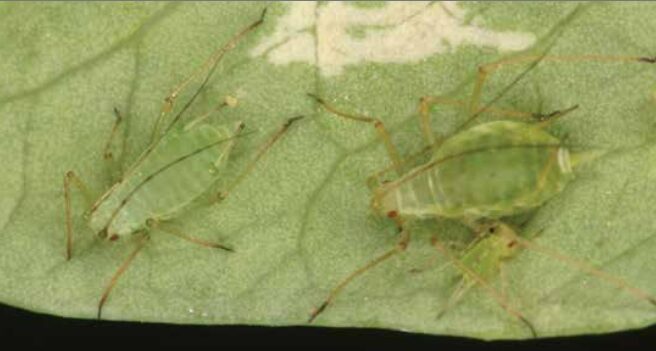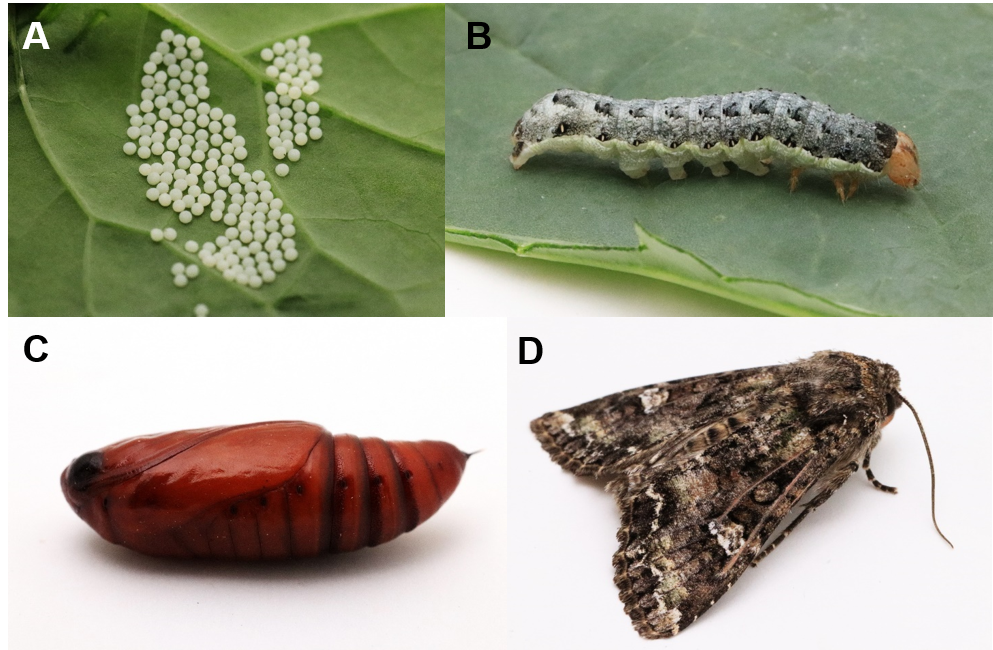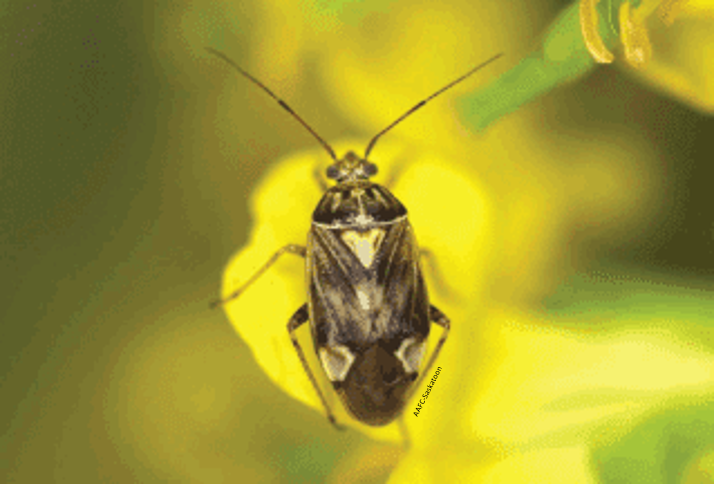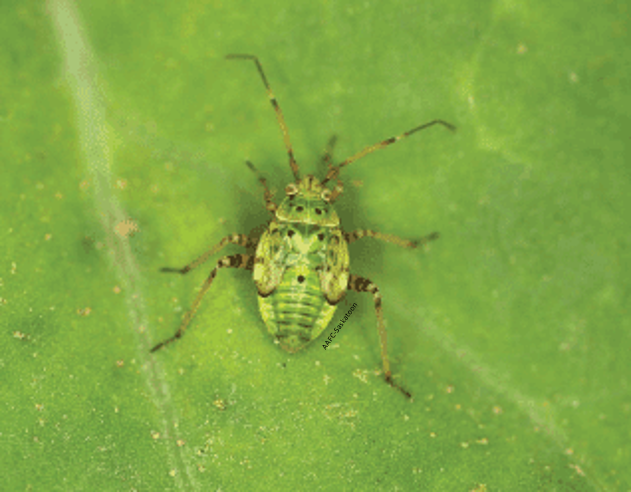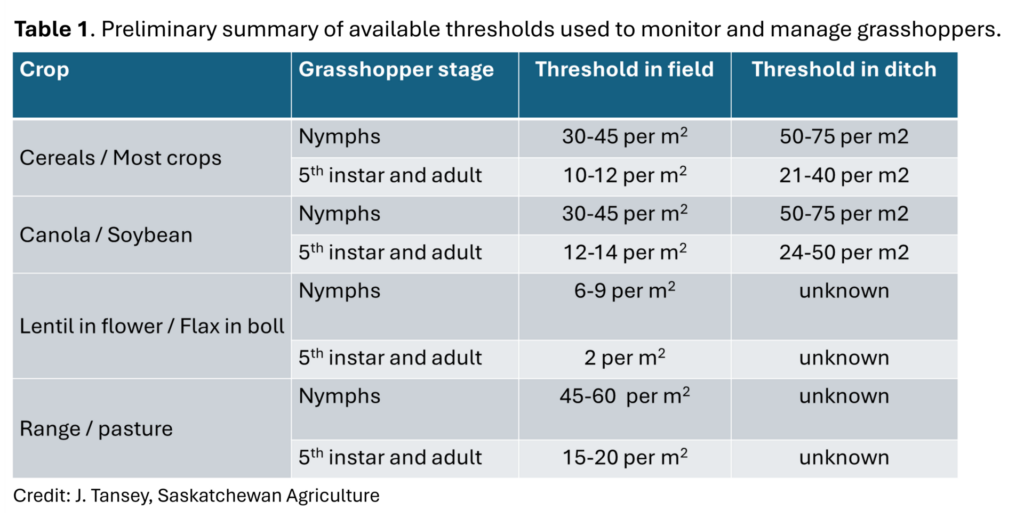Prairie-wide provincial entomologists provide insect pest updates throughout the growing season. Follow the hyperlinks to readily access their information as the growing season progresses:
MANITOBA’S Crop Pest Updates for 2024 are available. Access the August 8, 2024 report (or access the PDF copy). Bookmark the insect pest homepage to access fact sheets and more! Highlights reported by Dr. J. Gavloski include:
• Bertha armyworm – Some control of bertha armyworm has occurred in several fields in Southwest Manitoba. Some evidence of diseased bertha armyworms has also been observed. Access Manitoba’s fact sheet for this insect to support in-field scouting for larvae now.
• Lygus bugs – A couple of canola fields in the Eastern region were sprayed for Lygus bugs. Lygus near threshold in sunflowers was reported from the Southwest region.
• European corn borer – A field of corn in the Eastern region was sprayed for European corn borer. Access Manitoba’s fact sheet for this insect.
• Aphids – Aphids are being noticed in some fields of peas (pea aphid), soybeans (soybean aphid), cereal crops (a complex of cereal feeding aphids) and on canola leaves in some area. Currently, in most instances, these are not at economic levels, or the crops are beyond the more susceptible stages. Noticeable levels of predators of aphids, and evidence of parasitism, have also been reported in some areas.
• Thrips – High levels of thrips in barley were reported from the Northwest region.
• Sunflower midge – Some damage from sunflower midge was noticed along the edges of a sunflower field in the Eastern region.
• Insects in Stored Grain – AAFC in Winnipeg is seeking producer participation for grain bin monitoring in September-October 2024. Learn more here and find out how to participate.
SASKATCHEWAN’S Crop Production News is back for the 2024 growing season! Access the online Issue #6 report which notes pea aphids in various pulse and alfalfa crops in southeast Saskatchewan (and includes thresholds to support scouting). The report also notes wheat midge are being caught on traps and a link to their wheat midge webpage. Bookmark their insect pest homepage to access important information! Also access the Crops Blog Posts that released a grasshopper activity update (June 2024), announced registration for the Crop Diagnostic School 2024 but also posts help for scouting fields for wireworms (May 2024), grasshopper identification: pest or not (Apr 2024), a summary of wheat midge populations and management (Mar 2024), and a description of pea leaf weevil populations (Feb 2024). This week in Saskatchewan:
• A brief summary of notable insect pests shared by Dr. J. Tansey is that aphids are the ‘big’ story; aphids in lentils and increasing aphid populations in cereals were noted.
• Localized grasshopper pressure occurred across multiple crops in some parts of Saskatchewan.
• The 2024 Bertha armyworm Pheromone Trap map is now available online (or access a PDF copy of the July 31, 2024 map) and note that counts continue to increase, with a few ‘warm’ spots.
ALBERTA’S Insect Pest Monitoring Network webpage links to insect survey maps, live feed maps, insect trap set-up videos, and more. There is also a Major Crops Insect webpage. Remember, AAI’s Agri-News occasionally includes insect-related information, e.g., diamondback moth and bertha armyworm (August 6, 2024); aphids in field crops, canola flower midge scouting (July 29, 2024); assessing and a description of missing pods on canola (July 22, 2024); scout for wheat midge (July 15, 2024); the right canola crop stage to spray for lygus bugs (July 8, 2024); soil moisture, wheat midge and other insect pests (June 24, 2024); scout for grasshoppers and other insect pests (June 17, 2024); how to manage stem feeding from flea beetles, keep canola bins malathion-free, scout for grasshoppers and other pests (June 10, 2024); scout for insect pests (June 3, 2024); scout for grasshoppers (May 27, 2024); flea beetle control (May 6, 2024); cereal insect pests, latest on insects in canola, and post-emergence wireworm scouting (May 13, 2024).
• Wheat midge monitoring – Cumulative counts arising from weekly data are available so refer to the Live Map. So far, cumulative trap counts from 37 trap locations are reporting; 11 sites in central Alberta are “high” and in the Peace River region 21 sites are reporting “high”, 2 sites are “medium”, and 2 sites are “low” (as of August 1, 2024).
• Cabbage seedpod weevil monitoring – Sweep-net count data can be reported here then the data populates the Live Map. So far, a total of 16 sites in southern Alberta are reporting; there are 14 “low risk” plus 2 “high risk” reports as of August 8, 2024).
• Bertha armyworm pheromone trap monitoring – Cumulative counts arising from weekly data are available so refer to the Live Map. Cumulative trap counts from 272 trap locations are all reporting “low risk” across the province while 1 trap location near Fairview, plus 3 trap locations in southern Alberta (2 in Vulcan County plus 1 near Lethbridge) are reporting “medium risk” as of August 8, 2024). Remember to scout fields for larvae.

